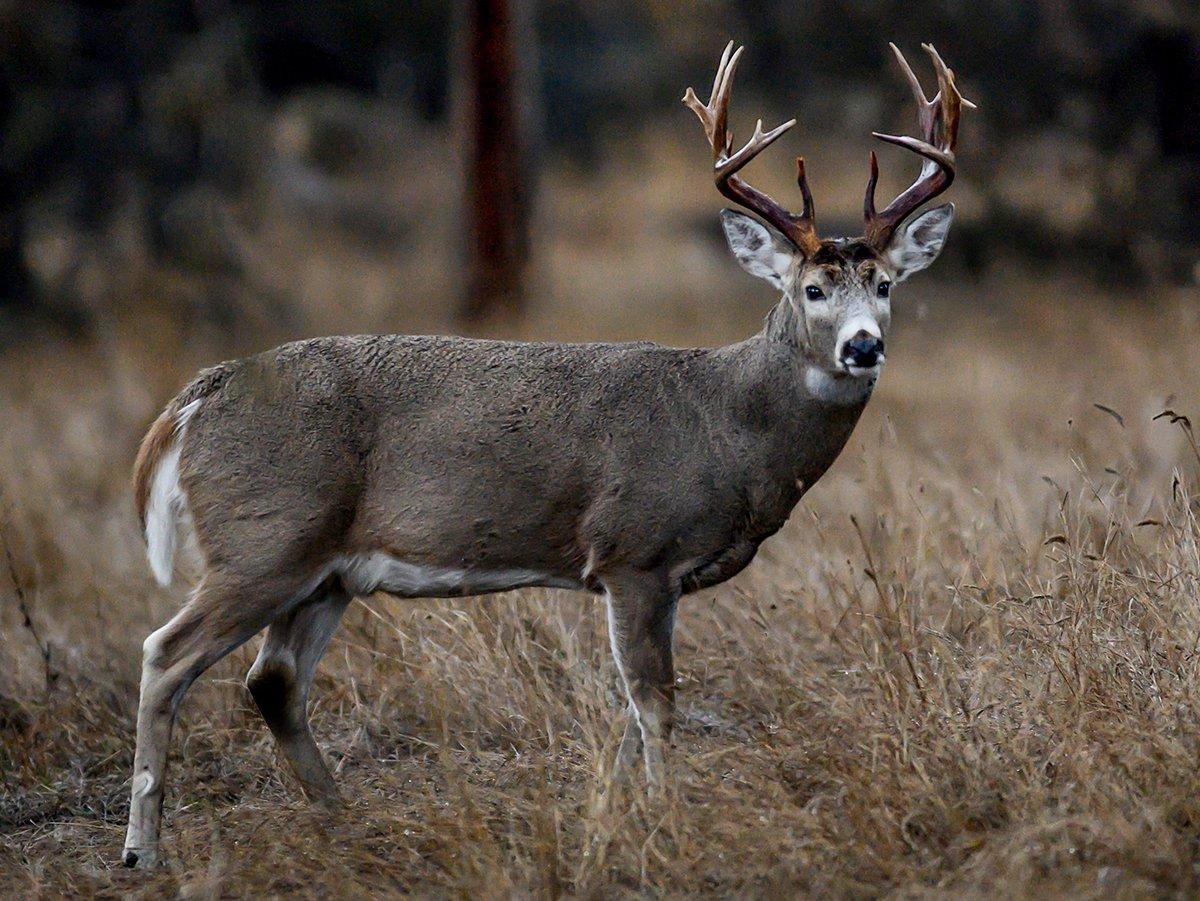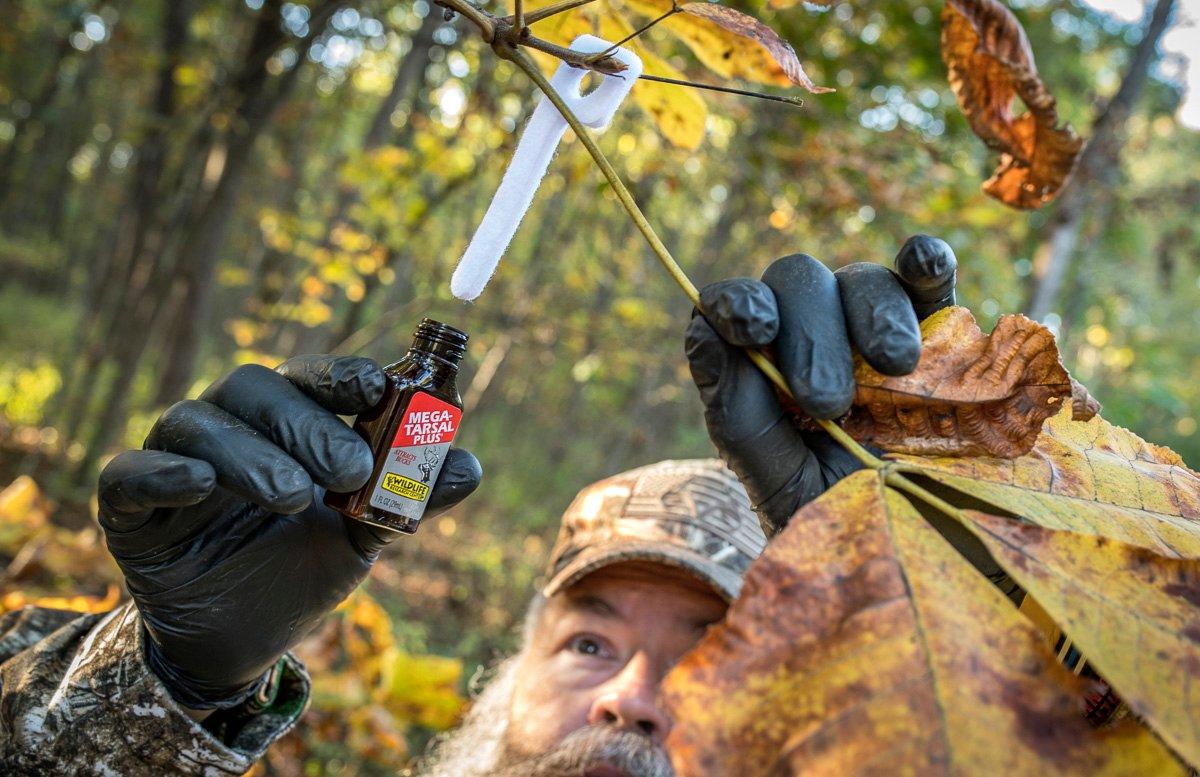Doe-in-heat is great, but from Halloween through mid-November, tarsal is the dominant deer smell in the woods. Here's how to use it to your advantage
One morning in early November, I smoked an 8-pointer with my muzzleloader and got on the blood trail. I could smell his rankness as I tracked, and when I found him a short way ahead, I covered my nose with my sleeve and thought, Man, you stink. The deer's hocks were wet and black as motor oil. I rolled him over, held my breath and started gutting.
Leaves popped. I peeked up and saw 10-pointer bearing down, head and rack held low, hair bristling on his neck. I crouched low behind the dead deer. A rut-crazed buck is unpredictable. I figured staying put rather than trying to wave him off was best.
The intruder sidled to within 15 yards, popping his hooves and giving me the sideways evil eye. When my stinking deer didn't pose a threat, he whirled and trotted off.
It was a freaky encounter, and it taught me something. From Halloween through the first 10 days or so of November, tarsal is the dominant smell in the deer woods.
(Don't Miss: Here's Where Pressured Bucks Spend the Most Time)
Tarsal Science
Biologists at the University of Georgia studied the glands of whitetails, and what role if any those glands play in deer-to-deer communication. They found that the hairy tarsal tufts, which are located on the inside of the hind legs of both bucks and does, are the strongest-smelling of all the glands. The tarsals on bucks become blacker and ranker as the animals rub-urinate over them and into scrapes during pre-rut. The stink lingers because bucks don't lick the urine off the hocks like they do at other times of year.
The study showed that the tarsal tufts act as wicks for myriad bacteria. These bacteria, along with gland secretions and urine, cause the hocks to emit a buck's powerful individual odor that advertises his dominance, and perhaps his breeding status, to other bucks and does. The researchers observed that bucks sometimes flare this hairy gland during aggressive interactions with other deer.
(Buy Alert: 23" EZ Hanger + Arrow Puller Combination 2 Pack)
Using Tarsal Scent
By setting out some tarsal on a ridge or in a bottom, you float a challenge to any mature buck working the area. If a big deer thinks a stinky interloper is invading his turf, he may march over for a look. That is precisely what happened when that rut-crazed buck rolled in on me and that rank, dead deer I told you about earlier.
Ever since that day, I'm a believer. I set a wick or two juiced with a heavy dose of tarsal and buck urine near my stand when I'm bow or black-powder hunting from Halloween through the first week of November. This hard pre-rut period is the optimum time to try it, when testosterone-addled bucks are on the move and ready to confront other bucks for the opportunity to breed the first receptive does. It can't hurt to set out a third wick doused with estrus doe scent near your post to create the ruse that one of those first hot does is in the area.
I use Mega-Tarsal Plus from Wildlife Research Center, but all the major scent companies offer their version of this pungent scent. You can get creative, too. If a buddy kills his buck in late in October or early November, put on rubber gloves and cut the dark tarsal tufts off the deer's back legs. Store them in a plastic baggie in the fridge. As you hunt the next couple weeks, unbag and hang the tarsal tufts on limbs around your stand to float the smell of an intruder buck.
Probably 95 percent of the deer lure sold in America is doe-in-heat, but I have had more bucks interact with my tarsal sets over the years. Keep in mind this strong musk might scare off young bucks. But if you're hunting for a mature deer, as most of you are, try it.
(Don't Miss: 3 Top States for DIY Big Buck Hunters)










